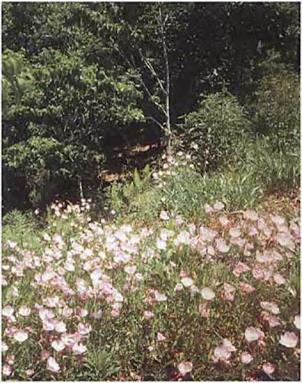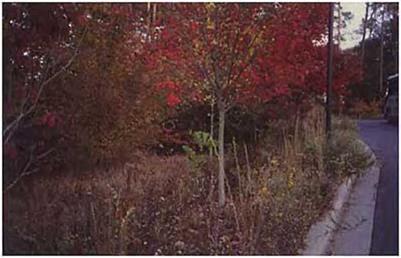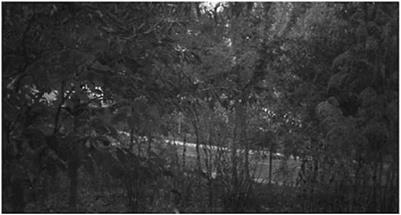In these sunny zones along the entrance drive, relatively short sun-loving grasses and forbs (e. g. purple lovegrass, silkgrass, evening primrose and verbena) blend into taller herbaceous species (e. g. broomsedge, splitbeard bluestem and lanceleaf coreopsis) and then colonies of sassafras, sumac, Chickasaw plum and red cedar (Figures 5.1 to 5.3). Herbaceous plants in this zone were installed as
|
|
5.1
Broomsedge (Andropogon virginicus) and other grasses in a ‘roadside’ community. Planted in spring 1994
and photographed in December 1994 at the Atlanta History Center
 |
5.2
Showy evening primrose (Oenothera speciosa) in ‘roadside’ community, Atlanta History Center (spring 1996)
 |
5.3
Roadside/woodland edge, Atlanta History Center, including red maple (Acer rubrum), flowering dogwood (Cornus florida) and American beech (Fagus grandifolia), as it looked in November 1997
 |
5.4
Upland forest planting, Atlanta History Center, as it looked in November 1997
|
|
5.5
Upland forest planting, Atlanta History Center, as it looked in November 1997
seedlings, planted at approximately one foot spacing; woody species were planted as variably sized saplings. The natural reproduction of the planted species is permitted to continue, within limits, both by vegetative spreading and self-seeding. The invasion of the woody species into the zone nearest the roadway is purposely inhibited, however, by an annual mowing to ‘hold’ it as a sunny, flowering roadside.





